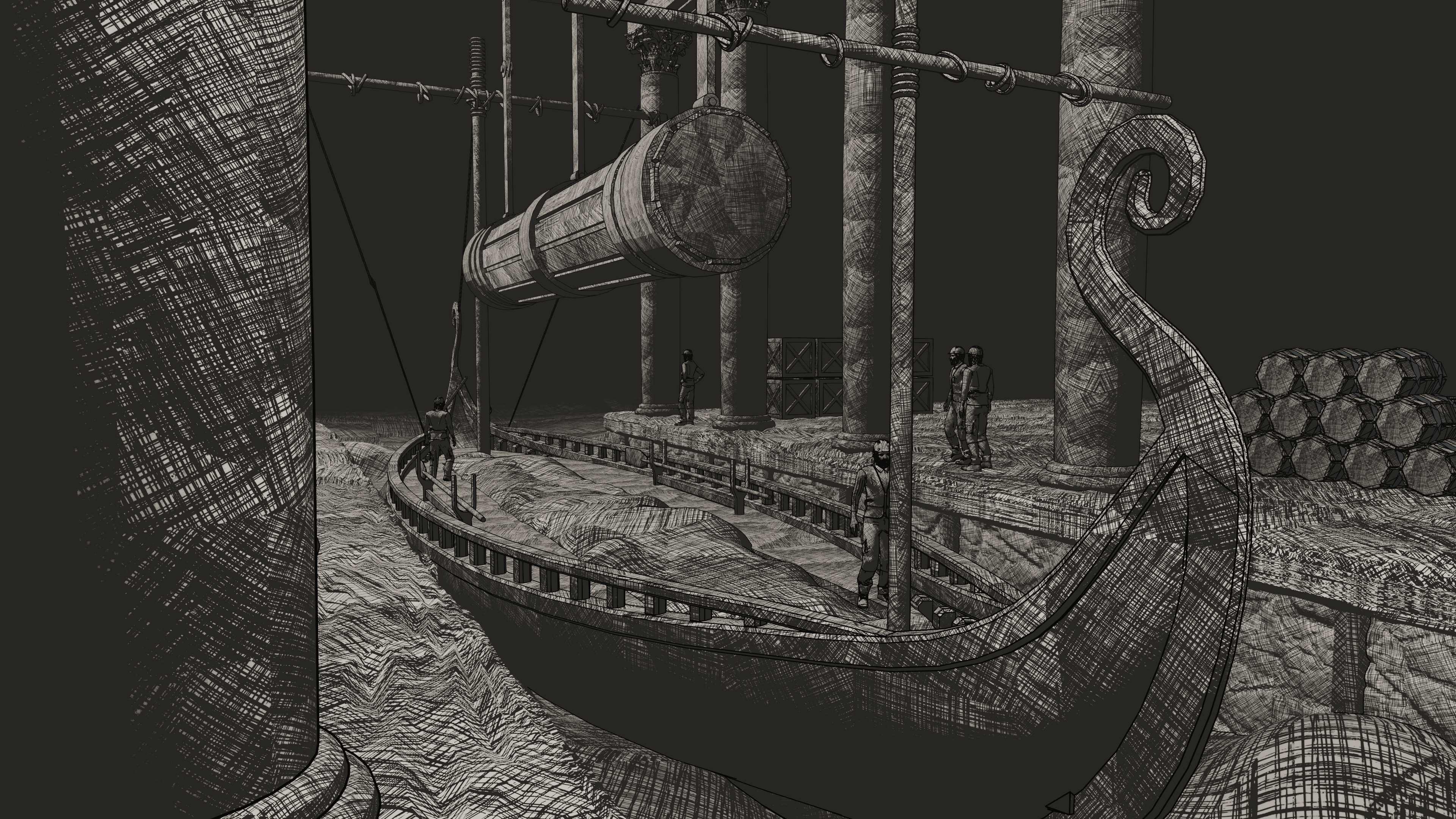The Harbour
From ship to sledge or from ship to barge
During the Middle Ages, traditional harbor cranes existed for loading and unloading ships, with the iconic double treadwheel being commonly used. These devices were designed to stow goods into ships' keels and could pivot to move blocks weighing up to 14 tonnes. While evidence supports their use in North Sea ports, their presence in Mediterranean ports during this era remains unverified. The use of harbor cranes continued into the Renaissance, employing pulleys and tackles. Michelangelo's correspondence highlights the complexity of loading heavy blocks onto ships. However, these machines seemed suitable only for average-sized blocks, but knowledge of loading giant columns was limited.

Loading columns onto ships posed challenges, as the elongated shape prevented the use of rotating machines. Francesco Gasparoni's work from 1841 offers insights into how pulleys and winches were used to transfer shafts from a barge to a seagoing vessel which will create a framework in which Francesco's machines could operate. Efficiently transferring columns from ships to land required additional mechanisms, as columns were often stowed in lower compartments of the ship. Machines combining both vertical and horizontal movement were recommended for this process due to the limited stability of ships.